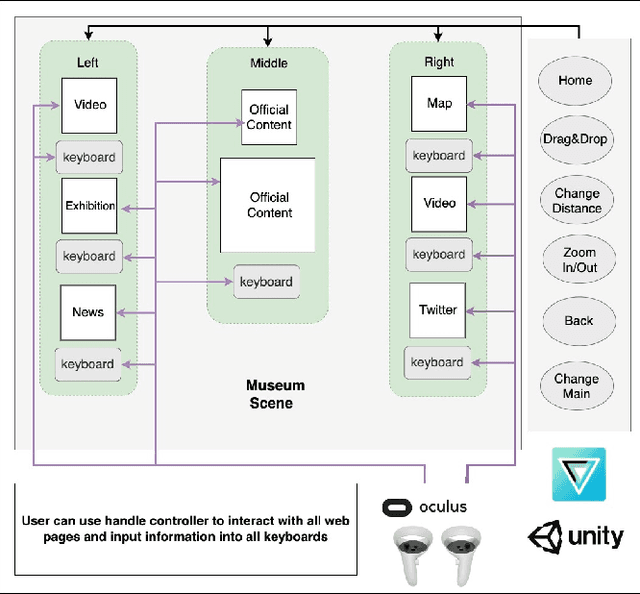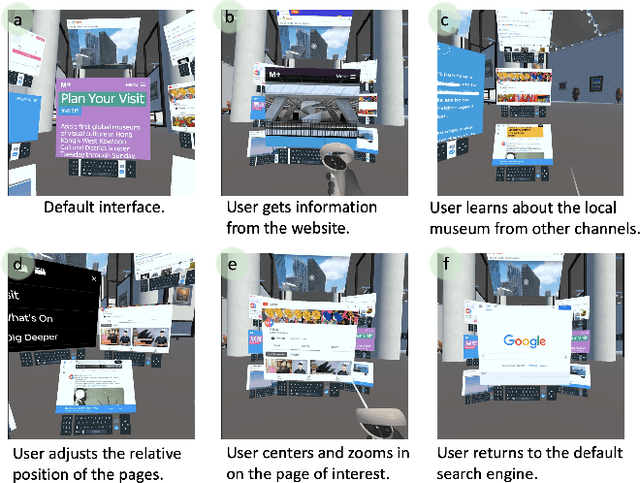Ze Gao
What's Next? Exploring Utilization, Challenges, and Future Directions of AI-Generated Image Tools in Graphic Design
Jun 19, 2024Abstract:Recent advancements in artificial intelligence, such as computer vision and deep learning, have led to the emergence of numerous generative AI platforms, particularly for image generation. However, the application of AI-generated image tools in graphic design has not been extensively explored. This study conducted semi-structured interviews with seven designers of varying experience levels to understand their current usage, challenges, and future functional needs for AI-generated image tools in graphic design. As our findings suggest, AI tools serve as creative partners in design, enhancing human creativity, offering strategic insights, and fostering team collaboration and communication. The findings provide guiding recommendations for the future development of AI-generated image tools, aimed at helping engineers optimize these tools to better meet the needs of graphic designers.
VR PreM+ : An Immersive Pre-learning Branching Visualization System for Museum Tours
Nov 01, 2023



Abstract:We present VR PreM+, an innovative VR system designed to enhance web exploration beyond traditional computer screens. Unlike static 2D displays, VR PreM+ leverages 3D environments to create an immersive pre-learning experience. Using keyword-based information retrieval allows users to manage and connect various content sources in a dynamic 3D space, improving communication and data comparison. We conducted preliminary and user studies that demonstrated efficient information retrieval, increased user engagement, and a greater sense of presence. These findings yielded three design guidelines for future VR information systems: display, interaction, and user-centric design. VR PreM+ bridges the gap between traditional web browsing and immersive VR, offering an interactive and comprehensive approach to information acquisition. It holds promise for research, education, and beyond.
AI Nushu: An Exploration of Language Emergence in Sisterhood -Through the Lens of Computational Linguistics
Oct 18, 2023Abstract:This paper presents "AI Nushu," an emerging language system inspired by Nushu (women's scripts), the unique language created and used exclusively by ancient Chinese women who were thought to be illiterate under a patriarchal society. In this interactive installation, two artificial intelligence (AI) agents are trained in the Chinese dictionary and the Nushu corpus. By continually observing their environment and communicating, these agents collaborate towards creating a standard writing system to encode Chinese. It offers an artistic interpretation of the creation of a non-western script from a computational linguistics perspective, integrating AI technology with Chinese cultural heritage and a feminist viewpoint.
Exploring the Intersection of Complex Aesthetics and Generative AI for Promoting Cultural Creativity in Rural China after the Post-Pandemic Era
Sep 05, 2023Abstract:This paper explores using generative AI and aesthetics to promote cultural creativity in rural China amidst COVID-19's impact. Through literature reviews, case studies, surveys, and text analysis, it examines art and technology applications in rural contexts and identifies key challenges. The study finds artworks often fail to resonate locally, while reliance on external artists limits sustainability. Hence, nurturing grassroots "artist villagers" through AI is proposed. Our approach involves training machine learning on subjective aesthetics to generate culturally relevant content. Interactive AI media can also boost tourism while preserving heritage. This pioneering research puts forth original perspectives on the intersection of AI and aesthetics to invigorate rural culture. It advocates holistic integration of technology and emphasizes AI's potential as a creative enabler versus replacement. Ultimately, it lays the groundwork for further exploration of leveraging AI innovations to empower rural communities. This timely study contributes to growing interest in emerging technologies to address critical issues facing rural China.
Inspire creativity with ORIBA: Transform Artists' Original Characters into Chatbots through Large Language Model
Jun 16, 2023
Abstract:This research delves into the intersection of illustration art and artificial intelligence (AI), focusing on how illustrators engage with AI agents that embody their original characters (OCs). We introduce 'ORIBA', a customizable AI chatbot that enables illustrators to converse with their OCs. This approach allows artists to not only receive responses from their OCs but also to observe their inner monologues and behavior. Despite the existing tension between artists and AI, our study explores innovative collaboration methods that are inspiring to illustrators. By examining the impact of AI on the creative process and the boundaries of authorship, we aim to enhance human-AI interactions in creative fields, with potential applications extending beyond illustration to interactive storytelling and more.
 Add to Chrome
Add to Chrome Add to Firefox
Add to Firefox Add to Edge
Add to Edge